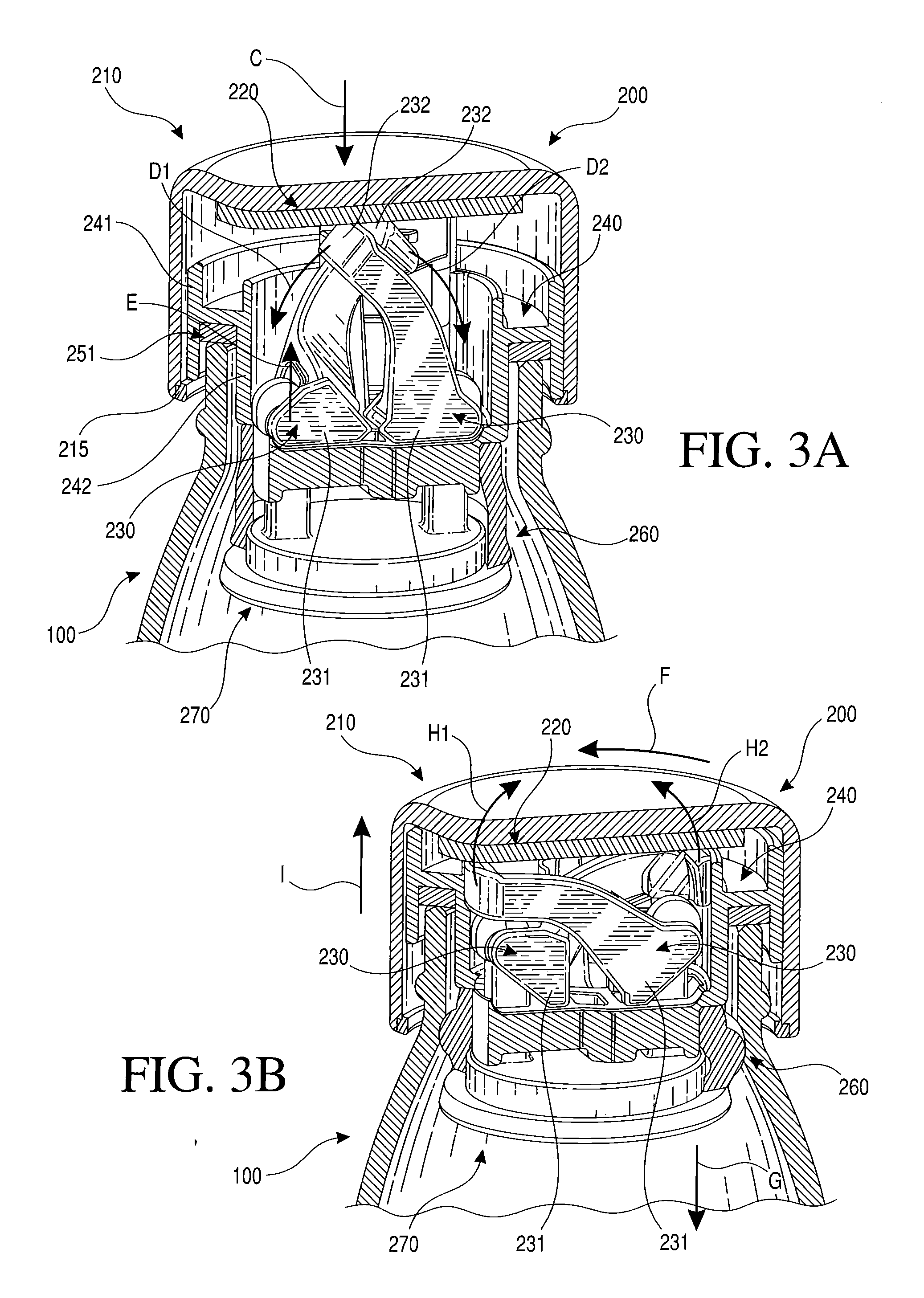Push-On Twist-Off Bottle Closure
a bottle closure and push-on technology, applied in the field of container closures, can solve the problems of not providing the characteristics modern consumers desire, being considered too easy to disengage, and many of the closure mechanisms are not providing the characteristics that modern consumers desir
- Summary
- Abstract
- Description
- Claims
- Application Information
AI Technical Summary
Benefits of technology
Problems solved by technology
Method used
Image
Examples
Embodiment Construction
[0037]A preferred bottle closure allows a user to easily and quickly seal a bottle, and alternatively release the seal and remove contents from the bottle. The bottle closure has a shape and size that corresponds to an open bottle neck. The open bottle neck may be various sizes, such as the neck of a wine bottle or the neck of a canning jar. To seal in the contents of the bottle, a user loosely seats the closure on the bottle neck and pushes down on a cap interface until the bottle closure locks in place. Pushing down on the cap interface causes a flexible seal inside the closure to be squeezed vertically and expand radially forcing contact between the flexible seal and the bottle wall. The contact between the flexible seal and the bottle wall helps to preserve liquids, such as beverages, stored in the bottle. To remove the liquid stored in the bottle, the user turns the cap interface radially, causing the flexible seal to return to its original non-compressed form, and removing con...
PUM
 Login to View More
Login to View More Abstract
Description
Claims
Application Information
 Login to View More
Login to View More - R&D
- Intellectual Property
- Life Sciences
- Materials
- Tech Scout
- Unparalleled Data Quality
- Higher Quality Content
- 60% Fewer Hallucinations
Browse by: Latest US Patents, China's latest patents, Technical Efficacy Thesaurus, Application Domain, Technology Topic, Popular Technical Reports.
© 2025 PatSnap. All rights reserved.Legal|Privacy policy|Modern Slavery Act Transparency Statement|Sitemap|About US| Contact US: help@patsnap.com



